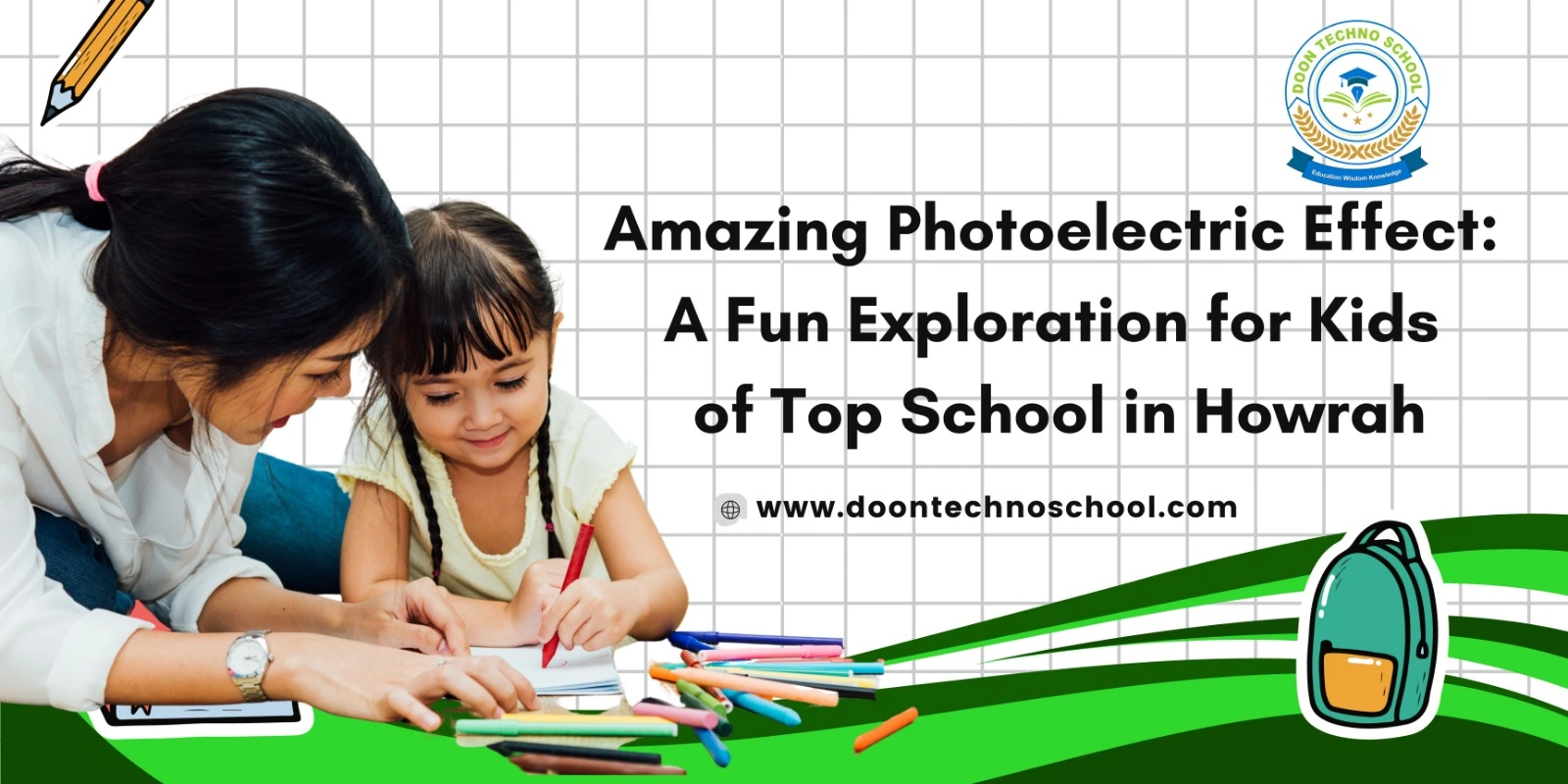
Dear students, Welcome to the world of science. The science is also a subject or a category which students had to study during their school days. Do you know about the term photoelectric effect? What is it and how it is a fun way for students to explore? Through this web blog, we will let you know about the reputed and top English medium school in Howrah.
Our top CBSE school in Howrah is named as Doon Techno School. Our school is located in Domjur and known for providing the great services and facilities. All the subjects are taught to children from Nursery to class VIII. One of the subject which is taught in our school is Science.
The photoelectric effect is a science trick where light helps create electricity. When light shines on certain materials such as metals, it make tiny particles called electrons. This is how light can act both in a wave and in a particle.
How does the photoelectric effect work?
As we all know light is made of small energy units called photons. If light falls on a metallic surface, the photons clash with the electrons present in the metal surface.
Photon energy and electron ejection
Not all photons possess the same energy. Some are stronger than others and can thereby kick electrons out of the metal more effectively. If a photon's energy is too small it will not have the power to dislodge an electron. This is somewhat like trying to open a door that doesn't quite fit and requires a real shove to open. If one doesn't push hard enough, there is just not enough power to make the door budge!
Laws of photoelectric effect
Basically, there are three laws of photoelectric effect. The first laws tell us that the light must have enough energy. Photons which lack energy, cannot serve to detach electrons from the metal. As we all know that closing a door needs same amount of energy.
The second law tells us that the number of electron depends on the light energy. The intensity here refers to the brightness of the light. If a person has a brighter light, then more photons hit the metal and knock more electrons out. However, if the light is low in intensity but has high energy, the effect might still happen with the emission of fewer electrons.
This kinetic energy can be controlled in many ways, but essentially, energy will be transferred from the light to the metals in the form of electrons, and the main idea behind this law is that the greater the amount of light energy from photons is, the larger the speed of emitted electrons will be. Stated differently, brighter light does not send the electrons flying faster; rather, higher energy light sends the electrons flying faster. Therefore, if you use a source of higher energy light, the electrons will zip away from the metal faster!
Practical use of photoelectric effect
The photoelectric effect applies in our day to day life. Solar panels harness this photoelectric effect to convert sunlight into electricity. When sunlight photons hit the solar panels, they cause electrons in the material of the panel to move around. Many devices, like automatic doors, and light sensors, work based on the application of the photoelectric effect. These sensors detect the change in light level that has occurred and send a response. For example, in the case of entering a room with automatic lights, entering the room has created a dissipation of light which is identified by the sensor, thus the lights turn on! So much is the brilliance when using the photoelectric effect to simplify life.
Fun experiments to understand the photoelectric effect
Some of the fun experiments to understand the photoelectric effect explained by the teachers of top CBSE school in Howrah are listed below –
- Shine a light on a metal – Students of the top school in Howrah could do this fun experiment at their home. Shine a light on any piece of metal and measure the tiny electric charges produced.
- Different colours of light – You can use different colours of light along with different amount of energy. By using different lights like red, blue and green, you will get to know how these lights effect on the surface of a metal.
- Explore solar power – Make a simple device powered by the sun like the small solar charger. Practice this regularly and you will go further.
Conclusion
Remember, science is all around us. Hope you like this informative web blog. Join or enroll into the top English medium school in Howrah for your successful future. Thank you.





